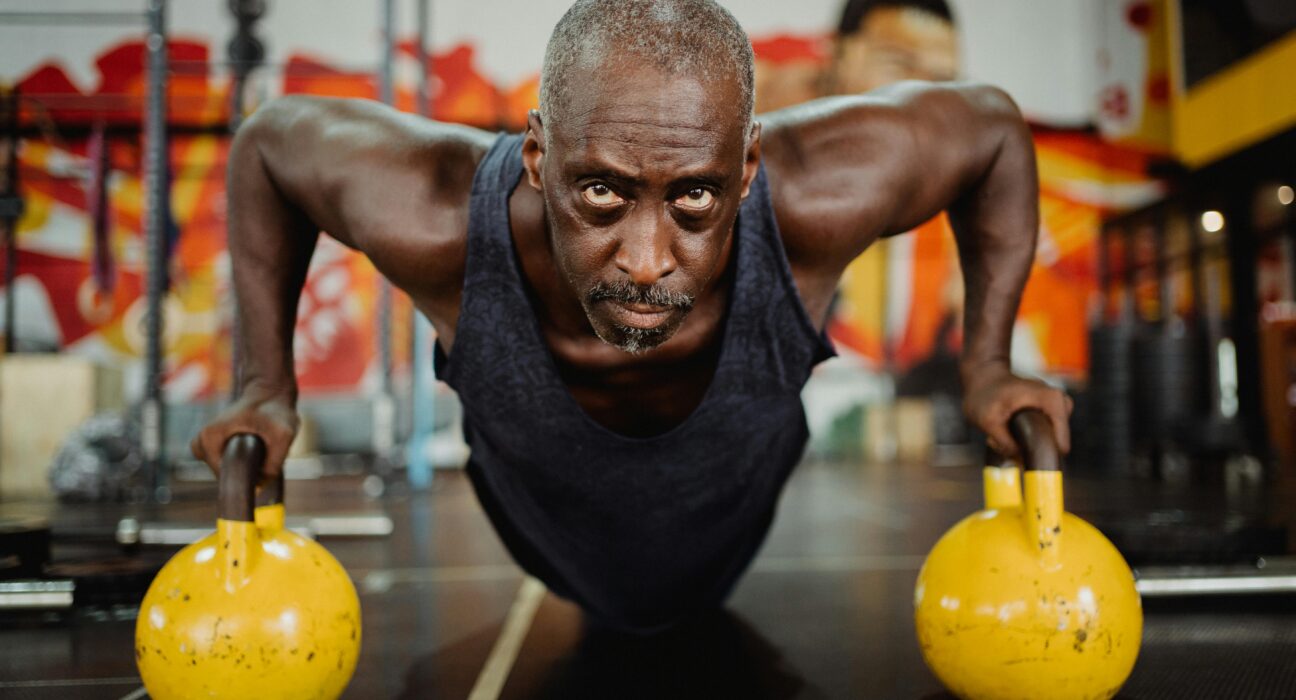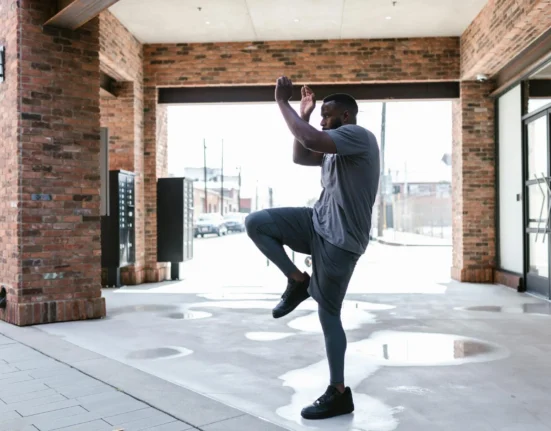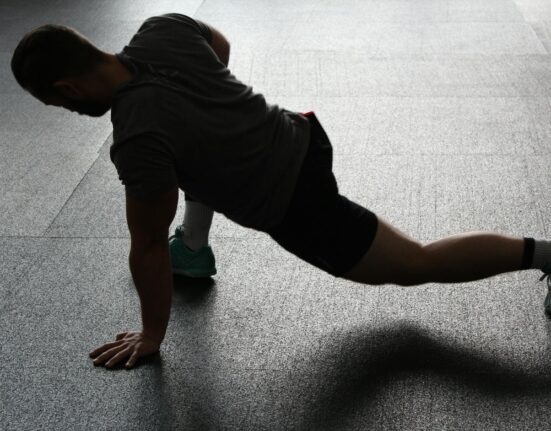As we age, staying active becomes more than just a fitness goal—it’s a necessity for living well. Strength training is one of the best ways to support your body after 50. It helps maintain muscle mass, strengthens bones, and improves balance, all of which are key to staying independent and injury-free. Beyond that, it boosts energy levels and keeps you feeling strong, no matter your age. Whether you’re new to exercise or looking to adapt your routine, it’s never too late to start building strength and improving your overall health.
The Benefits of Strength Training Over 50
As we move beyond 50, our body undergoes changes that can impact daily life, but the good news is that strength training is like pressing the “reset” button on many of these challenges. It’s not just about lifting weights; it’s about lifting your quality of life. Whether you want to stay independent, manage your weight, or keep your bones strong, strength training offers key benefits. Let’s explore some of them.
Building Muscle to Combat Age-Related Decline
As we age, a natural process called sarcopenia—or age-related muscle loss—can begin to chip away at our strength and mobility. Without intervention, sarcopenia can lead to weaker muscles, loss of independence, and an increased risk of injury. That’s where strength training steps in to save the day. By engaging in regular resistance exercises, you can trigger muscle growth and maintain the strength that supports your daily activities.
Strength training doesn’t require hours at the gym. Even simple exercises like bodyweight squats, push-ups, or resistance band movements stimulate muscle growth. Studies have shown that strength exercises can significantly reduce sarcopenia-related symptoms, restoring not just muscle mass but also function and vitality. Learn more about sarcopenia and strength training here.

Photo by cottonbro studio
Strengthening Bones for Better Mobility
Bone health often takes a backseat to other fitness priorities, but it’s especially vital for those over 50. As bones become less dense with age, they increase the risk of conditions like osteoporosis. Strength training is one of the most effective ways to combat this. By putting stress on your bones through activities like lifting weights or completing resistance exercises, you stimulate bone growth and reduce the chance of fractures.
Exercises like weighted lunges, deadlifts, or even carrying groceries can directly impact bone density. Stronger bones mean better posture, reduced risk of falling, and an active lifestyle. Want to know how strength training supports bone health? Check out these expert insights.
Boosting Metabolism and Managing Weight
Have you noticed it’s harder to maintain a healthy weight as you age? A big culprit is the natural slowdown of your metabolism. As muscle mass decreases over the years, your body burns fewer calories—even at rest. Strength training flips the script by building muscle, which demands more energy from your body. In short, more muscle equals more calories burned, even when you’re on the couch.
Aside from revving up your metabolism, lifting weights can also reduce fat and improve body composition. It’s a win-win: you stay leaner while protecting your overall health. Here’s how strength training helps your metabolism.
Improved Balance and Coordination
Falls represent one of the biggest risks to older adults, but strength training can tip the scales in your favor. By focusing on exercises that improve not just power but also balance and coordination, you’ll enhance your stability and reduce the risk of falls. For example, working on single-leg exercises or practicing controlled movements like step-ups can train your muscles to support you in uncertain terrain.
Incorporating strength-based movements also engages smaller stabilizing muscles in the core and legs, ultimately improving posture and coordination. Curious to discover more fall prevention tactics? See the connection between strength training and better balance.
Strength training might initially seem intimidating, but it’s one of the best tools to age gracefully and actively. In the next sections, we’ll explore exercises to incorporate into your routine to reap these extraordinary benefits.
Key Strength Training Exercises for People Over 50
Building strength as we age is important for maintaining independence, improving mobility, and enhancing overall well-being. For those over 50, the right exercises can provide targeted benefits, such as stronger muscles, better posture, and improved balance. Below, you’ll find essential exercises along with modifications to suit different fitness levels.
Squats for Leg Strength
Squats are a fantastic way to build leg strength, promote joint health, and enhance balance. They primarily target your quadriceps, hamstrings, glutes, and even engage your core. Proper form is crucial to prevent injury and maximize results:
- Start with your feet shoulder-width apart. Point your toes slightly outward.
- Lower yourself as if sitting into a chair, keeping your chest upright and knees aligned with your feet.
- Push through your heels to return to standing.
For beginners or those with mobility constraints, try chair squats:
- Sit down slowly on a sturdy chair, then stand back up using controlled movements.
- Use a countertop or sturdy surface for balance if needed.
Squatting helps improve functional strength, making daily activities—like climbing stairs—easier. Plus, stronger legs can reduce your risk of falls. Learn more motion tips for safe squatting here.

Photo by Kampus Production
Modified Push-Ups for Upper Body Strength
Push-ups strengthen your chest, shoulders, triceps, and engage your core. When modified, they’re accessible for most fitness levels. Here’s how to adapt this classic move:
- Wall Push-Ups: Stand about two feet from a wall. Place your hands shoulder-width apart against the wall, lean in, then push back out. This reduces the strain compared to floor push-ups, making it an excellent start.
- Knee Push-Ups: If you’re ready for more challenge, kneel on the ground and keep your hands shoulder-width apart. Lower your chest to the floor, and then push back up.
Whether done on the wall, knees, or toes, this exercise supports upper body strength for improved everyday activities, like lifting objects. See other effective upper-body moves here.
Bent-Over Dumbbell Rows for Back and Posture
A strong back is essential for posture, balance, and shoulder stability. Bent-over dumbbell rows target major upper back muscles like the lats and rhomboids.
- Hold a dumbbell in each hand and stand with feet shoulder-width apart.
- Bend your knees slightly and hinge forward at your hips, keeping your back straight.
- Pull the dumbbells toward your lower ribs, squeezing your shoulder blades together, and then lower them back down.
If you don’t have dumbbells, resistance bands work just as well. Avoid rounding your back while performing this exercise. Regular rows help combat the effects of prolonged sitting, which many of us experience.
Planks for Core Stability
Planks are a powerful way to strengthen your core muscles, which are critical for protecting your spine and improving balance. A solid core can make everyday movements safer and easier.
- Traditional Plank: Start on your elbows and toes, keeping your body in a straight line from head to heels.
- Modified Plank: Drop your knees to the ground or use a wall for support if a full plank feels too intense.
- Challenge Option: Add shoulder taps to your plank by lifting one hand to touch the opposite shoulder, alternating sides.
Aim to hold your plank for 20-30 seconds to start and gradually increase. Remember, quality is better than duration—focus on maintaining a straight and stable position.
Resistance Band Workouts for Full Body
Resistance bands are a fantastic tool for seniors because they’re portable, joint-friendly, and versatile. They provide consistent tension, challenging your muscles during every part of the movement.
- Examples of Exercises:
- Seated rows for back strength.
- Bicep curls to target arms.
- Side-steps with the band around your ankles for hip stability.
- Safety First: Check the band for any signs of wear before use to avoid snaps.
These bands are gentle on the joints while delivering effective muscle engagement. Not sure where to begin? Explore resistance band tips here.
Strength training is all about finding what works for your body and embracing modifications to ensure safety and results. Each of these exercises can be tailored to your comfort level while preparing your body for a healthy, active lifestyle.
Getting Started with Strength Training Safely
Starting strength training after 50 can feel intimidating, but it doesn’t have to be. A thoughtful approach ensures that you build confidence while avoiding injuries. The key is to take it slow, prioritize safe practices, and listen to your body throughout the process. Here’s how you can begin your strength training journey with safety and effectiveness in mind.
Start Slow and Build Gradually
When you first start out, it’s important to resist the urge to “go big or go home.” Overdoing it at the beginning is a common mistake that can lead to injury or burnout. Instead, aim for small, consistent steps. Begin with light weights, resistance bands, or even just your body weight. For example:
- Opt for 1-2 sets of 8-12 repetitions per exercise in your first few workouts.
- Focus on low-impact options like bodyweight squats, wall push-ups, or seated resistance band rows.
- Increase intensity gradually as your body adapts—adding a bit more weight or extra reps over time.
Small progress is still progress, and it sets the foundation for long-term success. For helpful advice on building up your routine safely, check out this beginner’s guide to strength training.
Focus on Proper Form First
Rushing into heavy lifts without learning the correct form is like driving a car without knowing the rules—you’re inviting trouble. Proper technique ensures you’re using the intended muscles while protecting your joints and back. Always prioritize form over how much weight you can lift. Here are a few key tips:
- Use mirrors or record yourself to check alignment—your knees, hips, and shoulders should move fluidly.
- Start with a professional or online tutorials to learn safe mechanics. For example, avoid letting your knees cave inward during squats or overarching your back in push-ups.
- Perform each movement slowly and controlled to prevent momentum from doing the work.
Not only will good form help prevent injuries, but it will also maximize your results. For more on why technique matters, read about the importance of proper form.

Photo by Kampus Production
Incorporate Rest and Recovery
The gains from strength training don’t happen while you’re exercising—they occur when your muscles recover. Rest days are as critical as your workouts. Over-exercising without proper recovery can cause strain and slow your progress. Keep these points in mind:
- Rest a muscle group for 48 hours after working it to allow for repair and growth.
- Incorporate active recovery, like light yoga or walking, to improve circulation.
- Don’t skip sleep—quality sleep is when much of the muscle repair process happens.
Recovery is part of training and ensures you’ll return to workouts feeling stronger and refreshed.
Consult a Professional When Needed
Starting strength training can be overwhelming, especially if you’re not sure where to begin or have pre-existing conditions. A qualified trainer or physical therapist can help tailor a plan specific to your goals and health status. Consider reaching out if:
- You’re dealing with arthritis, joint issues, or other medical concerns.
- You’re unsure about safe modifications for exercises.
- You want accountability or expert advice on progressing.
Look for experts with certifications from reputable organizations, and don’t hesitate to ask questions! For more on the benefits of professional guidance, this guide on weight training tips might be helpful.
Track Progress to Stay Motivated
Keeping track of your progress isn’t just useful—it’s inspiring. Seeing improvements over time will help you stay motivated and confident. Simple methods to track your journey include:
- Journal your workouts: Note your reps, weights, and any observations about how the exercises feel.
- Use metrics other than weight: Celebrate increased stamina, better posture, or greater ease in daily tasks.
- Take photos or videos: They can show subtle improvements, like better form or increased muscle definition.
Tracking is more than just a way to measure results—it’s proof that consistency pays off. Whether it’s seeing a heavier dumbbell in your hand or climbing stairs with better ease, these small victories are worth celebrating.
Common Myths About Strength Training Over 50
Strength training after 50 often carries a lot of misconceptions that can discourage people from giving it a try. But let’s set the record straight. By understanding the truth behind these myths, you can confidently start a strength training journey that supports your health and longevity.
Myth: Strength Training Is Too Dangerous
Many older adults worry that strength training might lead to injuries or strain their bodies. While safety is a valid concern, the reality is that strength training is safe for almost everyone when done correctly.
The key is to focus on proper technique and start with appropriate weights. For example, using a resistance band or doing bodyweight exercises are excellent ways to begin before progressing to additional weight. Working under the guidance of a certified trainer or following well-structured programs can further enhance safety. The goal isn’t to push your limits recklessly but to progressively strengthen your muscles and bones.
Studies have consistently shown that strength training not only lowers the risk of injury but also helps improve joint health and reduces pain associated with arthritis. Safe and effective training makes this myth outdated. Learn more about the safety of strength training here.
Myth: It’s Only for Younger People
Strength training isn’t exclusive to younger individuals with loads of spare energy. Some of the most compelling success stories come from people who picked up strength training later in life. Research reveals that older adults can build and maintain muscle effectively, even if they’ve never done resistance exercises before.
Consider this: a 60-year-old starting strength training today could see remarkable improvements in muscle tone, bone density, and balance within just a few months. Age may require adjustments in how you approach exercise, but the ability to build strength doesn’t stop with age. Check out this inspiring insight into strength training for older adults.

Photo by RDNE Stock Project
Myth: You Need a Gym Membership
When people imagine strength training, they often think about high-tech machines or heavy dumbbells at a gym. But the reality is you don’t need a gym to build strength. Bodyweight exercises like squats, push-ups, and planks, along with tools like resistance bands or simple hand weights, can deliver excellent results at home.
For instance:
- Resistance bands are compact, affordable, and perfect for targeting various muscle groups.
- Bodyweight exercises need no equipment and can be modified to match your fitness level.
- Everyday items like water bottles or canned goods can double as light weights.
This flexibility allows you to train effectively in your living room, at the park, or anywhere else. Explore creative ways to strength train without a gym.
Myth: It’s All About Lifting Heavy Weights
Strength training isn’t just about lifting the heaviest weight possible. Instead, it focuses on practicing controlled movements to work specific muscles effectively. It’s quality over quantity, always.
The emphasis is on slow, deliberate movements that engage the targeted muscle group fully. Lightweight options combined with multiple repetitions can be just as effective as heavy weights, especially for older adults prioritizing joint health. Think of strength training as a way to enhance control, not just build bulk. This approach supports functional strength, aiding daily tasks like carrying groceries or gardening.
For more balance-focused strength training tips, check out how moderation helps over 50.
Strength training myths can hold you back, but the truth is far less intimidating. Starting slow, focusing on technique, and choosing accessible exercises are all you need to make real progress. Each step brings you closer to a healthier, more active you!
Creating a Weekly Strength Training Routine
Developing a consistent strength training routine can feel like finding the perfect recipe—it’s all about balancing the right ingredients. For individuals over 50, incorporating a thoughtful approach to exercise is especially important. A well-rounded weekly routine doesn’t just build strength; it ensures flexibility, balance, and sustainable progress. Below, you’ll find specific recommendations for structuring your workouts.
How Often Should You Train?
When you’re just starting out, less is often more—especially for seniors. Experts recommend training two to three times a week for beginners. Why? It allows your muscles the recovery time they need to repair and grow stronger. As a rule of thumb:
- Space sessions on non-consecutive days (e.g., Monday, Wednesday, Friday).
- Avoid overworking one group of muscles more than twice a week.
Your rest days aren’t “days off.” Think of them as time for your body to recharge. Light activities like walking or stretching are great low-impact options to stay active. For more detailed guidance, discover effective senior workout plans here.
Balancing Strength and Cardio
Strength training is like the foundation of a well-built house, but cardio keeps the plumbing system running smoothly. Both are essential for a well-rounded routine. Cardio promotes heart health, endurance, and fat burning, while strength exercises build muscle and bone density.
Here’s how to pair them:
- Do light cardio as a warm-up (5-10 minutes) before strength training.
- Alternate between strength and cardio days to reduce fatigue.
- Include longer cardio sessions (e.g., brisk walking, cycling) twice a week for heart health.
You don’t have to choose between a strong heart and strong muscles—do both for the best results. If you’re unsure where to begin, check out these combination workout ideas.

Photo by Yan Krukau
Including Warm-Ups and Cool-Downs
Skipping your warm-up is like driving a car without letting the engine warm up—it’s a bad idea. Warming up gets blood flowing to your muscles, reducing the risk of injury. Cooling down prevents stiffness and speeds up recovery.
Warm-Up Basics:
- Spend at least 5-10 minutes on dynamic movements like arm circles, leg swings, or marching in place.
- Light cardio (e.g., walking or cycling) is also effective.
Cool-Down Routine:
- End with static stretches, holding each for 20-30 seconds.
- Focus on areas you used, such as your quads, hamstrings, and shoulders.
Treat warm-ups and cool-downs like brushing your teeth—non-negotiable steps in your routine. Find simple warm-up exercises here.
Progressing Your Workouts Over Time
Your body adapts to strength training faster than you’d think—but to keep improving, you’ll need to adjust your routine. Progress doesn’t mean jumping to heavier weights overnight. Small, steady changes are key.
Here’s how to safely advance your workouts:
- Increase weight slowly once you can complete 12 reps with ease.
- Add an extra set or perform an additional exercise targeting the same muscle group.
- Focus on controlled speed—slow reps engage your muscles more effectively.
Don’t confuse progress with perfection. It’s not about being the strongest but being stronger than yesterday. If you’re curious about how progression works, read this guide on resistance training for seniors.
Staying Consistent Long-Term
Sticking with a routine is more important than intensity at the start. Consistency builds habits, and habits become results. But how do you stay motivated for the long haul?
Here are a few strategies:
- Set realistic goals. Want to climb stairs without discomfort? That’s a strong goal to aspire to.
- Track your progress. Write down what you accomplished after each session—it’s encouraging to see progress, even if it’s incremental.
- Find a workout buddy. Exercising with someone else makes it both social and accountable.
- Remind yourself why you started. Whether it’s to feel stronger or stay independent, keeping your “why” front of mind can push you through any slump.
The journey isn’t about perfection—it’s about progress. With patience and persistence, you’ll see and feel the benefits of strength training over time.
By following these tips, creating a weekly strength training routine becomes not only achievable but enjoyable as well.
Conclusion
Strength training after 50 is about more than just building muscle—it’s a commitment to living stronger, healthier, and more independently. By improving strength, balance, and flexibility, you’re setting yourself up for an active life with fewer limitations.
Start where you are, and focus on consistent progress. Whether it’s mastering a plank or lifting light weights, every small step adds up to big benefits.
It’s never too late to put your health first. Ready to get started? Choose an exercise from this guide and take that first step today. Your future self will thank you.








